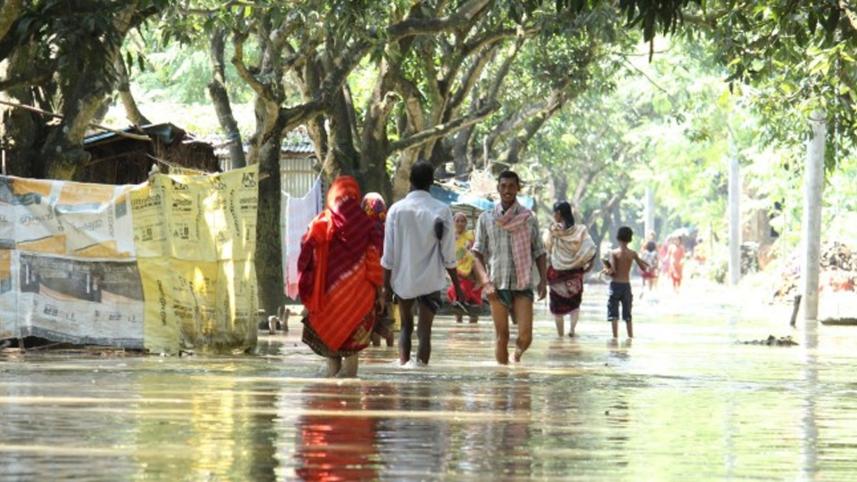Study predicts seven-fold surge in climate migration by 2050

A study by ActionAid and its partners titled "Costs of climate inaction: displacement and distress migration" across five South Asian countries—Bangladesh, India, Nepal, Pakistan and Sri Lanka — found that a total of 63 million people would be forced to migrate if the global community fails to limit global warming within a rise of two degrees since the pre-industrial period, a goal which was set by the Paris Agreement. And in Bangladesh, it could displace nearly three million people from their homes by 2050. Most of the migration will be caused due to events like sea level rise, lack of drinking water, drought-like situations and loss of biodiversity. Effects of extreme weather events like floods and cyclones were not included in this study.
It is appalling that the number of displaced people due to climate change in South Asia is almost as many as global migrants due to war and conflicts. Geographically, we have always remained vulnerable to climate disasters. Eighty-three percent of the people who live on floodplains are directly impacted by riverbank erosion, with the majority of people being displaced multiple times. As a result, many end up in the capital to find jobs. If nothing is done to divert these migrants, they will almost all end up in Dhaka city, which does not have the capacity to absorb such large scale migration. The national budget allocations of thousands of crores of Taka as climate relevant investment means nothing if it fails to protect vulnerable communities from climate related disasters.
Unless we take major steps as a global community, people will continue to be displaced and become climate migrants around the world. While developed countries must cut emissions and support developing countries that are most vulnerable to adapt to climate change and recover from climate disasters, these countries themselves have to think of long-term strategies that will support climate migrants. Decentralisation could help to create jobs in district towns and villages so that the already overburdened cities like Dhaka and Chattogram are not further taxed by the continuous influx of climate induced migration. At the same time, the government must ensure building more climate resilient and migrant-friendly towns through investing in infrastructure. Needless to say, it is our responsibility to do whatever necessary to stabilise the greenhouse gas emissions in order to protect the earth from the constant threat of climate change.



 For all latest news, follow The Daily Star's Google News channel.
For all latest news, follow The Daily Star's Google News channel.
Comments